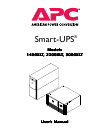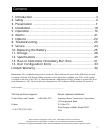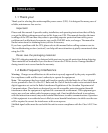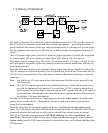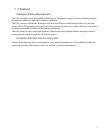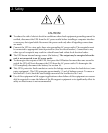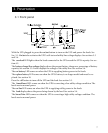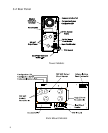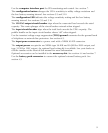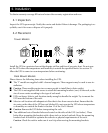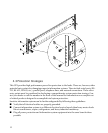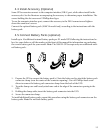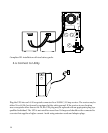
4
1.3 Theory of Operation
This high-performance, line-interactive, uninterruptible power source (UPS) provides clean, reli-
able, AC power to computer systems and other electrical equipment — protecting them from
power blackouts, brownouts, swells, sags, surges, and interference. It is designed to provide protec-
tion for equipment that operates on 208 volts AC, as well as peripheral equipment requiring 120
volts AC.
The UPS requires single phase 208 volts AC input for proper operation. Typically, this is supplied
by connecting the UPS to two phases of a three phase 208V delta or 120V wye service.
The primary output is single phase 208 volt AC. An auxiliary 400VA, (3.3 amps), 120 volt AC out-
put is provided to receptacles on the rear panel by an internal isolation transformer with the out-
put neutral grounded.
When the front panel display or the optional software report the amount of load, the load on the
120 VAC output is not reported separately, but it is included in the total load. This means that the
120 VAC load is accounted for when calculations are made to determine the amount of run time
remaining.
Note: Any load on the 120 volt output reduces the maximum load that can be powered by the
208 volt output.
Note: The 120 VAC output is provided by an isolation transformer which adds resistance in se-
ries with the equipment to be powered. As a result, the 120 VAC output variation due to
load (expressed as a percentage of nominal output) will be greater than the 208V output it
is powered from. This should not be a problem for most equipment that will be powered.
See Section 12 for more information.
Normally, the UPS operates “on-line,” supplying power from the utility input to the load (work-
station, server, or other device). The converter circuitry is used to maintain an optimal float
charge level on the battery.
When the utility fails, the converter supplies AC power to the load and the disconnect switch
opens. The loads operate normally until shut down or until the battery is exhausted. The UPS au-
tomatically transfers the load back to utility power when the line voltage returns to normal.
The UPS also provides surge protection and EMI/RFI filtering, as well as Smart-Boost
™
and
SmartTrim
™
, which correct high and low input voltage without drawing power from the battery.
Output control uses the UPS’s remote interface to turn the load on or off, without disabling other
UPS functions.



